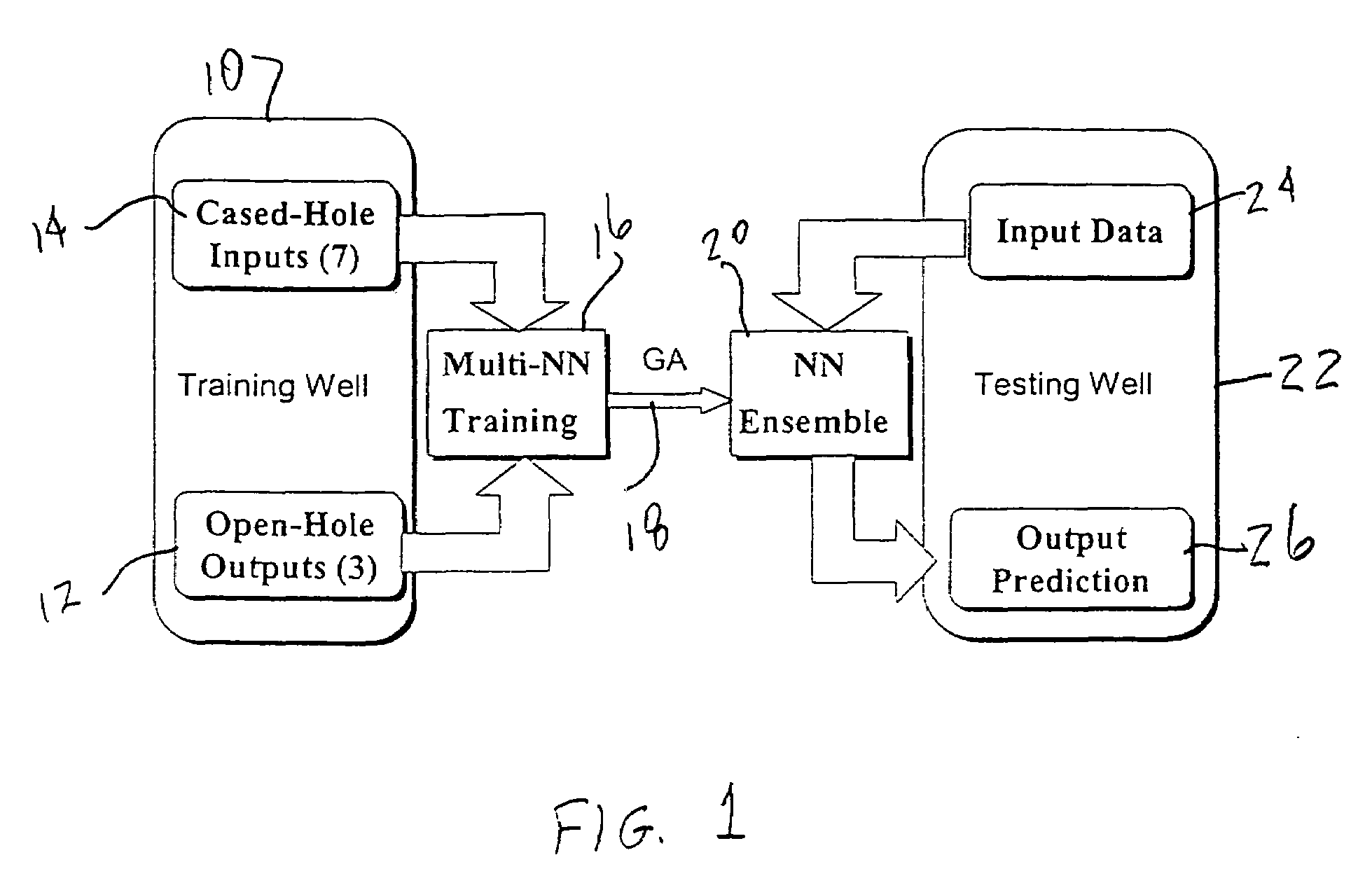Genetic algorithm based selection of neural network ensemble for processing well logging data
a neural network and data processing technology, applied in seismology for waterlogging, instruments, biological models, etc., can solve the problems of increasing the cost of drilling the well, increasing the cost of open hole logging, and physical inability to run an open hole logging tool in the hole, so as to improve the generalization performance
- Summary
- Abstract
- Description
- Claims
- Application Information
AI Technical Summary
Benefits of technology
Problems solved by technology
Method used
Image
Examples
Embodiment Construction
[0026]FIG. 1 illustrates the overall structure of an embodiment of the present invention useful in generating synthetic open hole logs from cased hole pulsed neutron logs as discussed above. Block 10 represents data collected from an actual well which is selected for use in training neural networks. The data includes open hole data 12 which may include the following three parameters, formation density, neutron porosity, and deep resistivity. The data also includes cased hole data 14 from a pulsed neutron log run after casing the well. The cased hole data 14 may include the following seven parameters: GR (gamma ray), SGIN (sigma formation intrinsic), RIN (inelastic gamma count rate ratio between detectors), RTMD (capture gamma count rate ratio between detectors), NTMD (near detector overall capture gamma count rate), FTMD (far detector overall capture gamma count rate) and SGBN (sigma borehole in near detector).
[0027]At block 16, the data sets 12 and 14 are used to train a set of neu...
PUM
 Login to View More
Login to View More Abstract
Description
Claims
Application Information
 Login to View More
Login to View More - R&D
- Intellectual Property
- Life Sciences
- Materials
- Tech Scout
- Unparalleled Data Quality
- Higher Quality Content
- 60% Fewer Hallucinations
Browse by: Latest US Patents, China's latest patents, Technical Efficacy Thesaurus, Application Domain, Technology Topic, Popular Technical Reports.
© 2025 PatSnap. All rights reserved.Legal|Privacy policy|Modern Slavery Act Transparency Statement|Sitemap|About US| Contact US: help@patsnap.com



